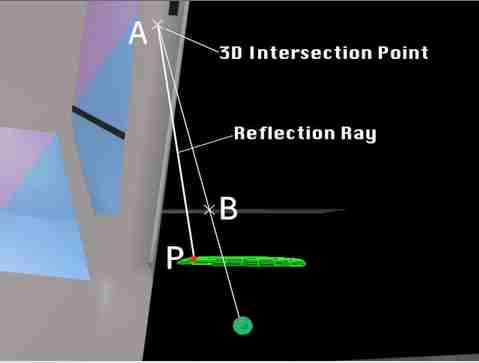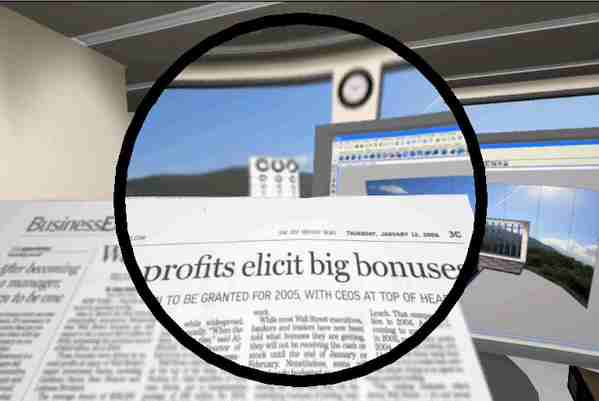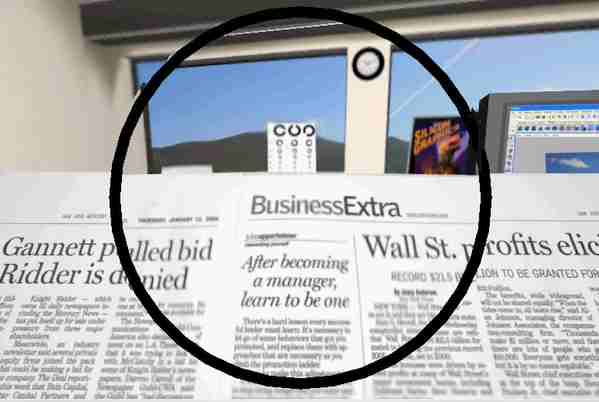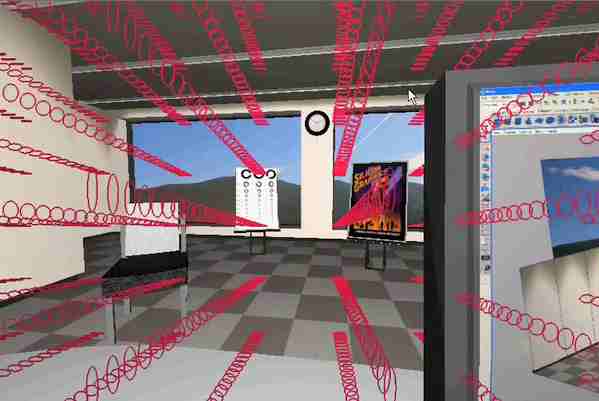Per-Vertex Ray Tracing
This movie illustrates how our algorithm for real-time reflection (refraction) works. The reflection ray from each vertex is traced to find an accurate 3D intersection and the point is guaranteed to be reflected at the vertex. This is easily applied to real-time double-refraction for lenses. Note that the opening car motion picture is made using Maya; it is NOT done by our technology.

Correction by a concave lens*
Concave lenses corrects myopia. Please note that the distant objects appears sharper when looked through the lens.

Correction by a convex lens*
Convex lenses are used to correct presbyopia. The newspaper becomes readable with this lens whereas distance objects are much blurred.

Correction by a progressive lens*
Progressive lenses are designed such that the upper half of the lens become concave and the lower half convex. Actually only a narrow central part of the lower half is effective for correcting presbyopia because of the difficulty of controlling the curvature of the lens surface.

A blur field for astigmatism*
This movie visualizes an instance of our novel concept "blur field" which covers the viewing volume and keeps the space dependent defocus information in voxels. The blur field shown as a flock of red ellipses is 'frozen' soon after it appears in the movie, in order for the viewer to roam into the 3D snapshot of the blur field. In this video, characteristics of an astigmatic eye are described with the blur field. The ellipses are vertically long near the eye but they gradually become circles and then horizontally long as the distance from the eye gets greater. Please note that the objects are blurred exactly according to their local blur field ellipses.
